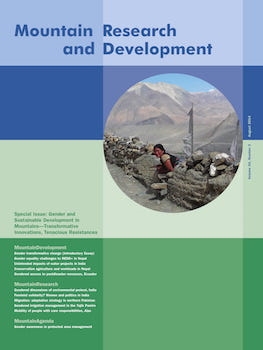BioOne.org will be down briefly for maintenance on 14 May 2025 between 18:00-22:00 Pacific Time US. We apologize for any inconvenience.
Special Issue: Gender and Sustainable Development in Mountains—Transformative Innovations, Tenacious Resistances
Articles (1)
Editorial (1)
MountainResearch (5)
MountainAgenda (1)
MountainPlatform (1)
MountainMedia (5)

No abstract available
No abstract available
Gendered Access to Formal and Informal Resources in Postdisaster Development in the Ecuadorian Andes
No abstract available
No abstract available
No abstract available
No abstract available
No abstract available
